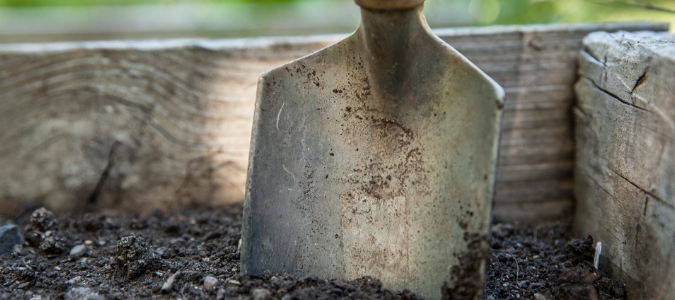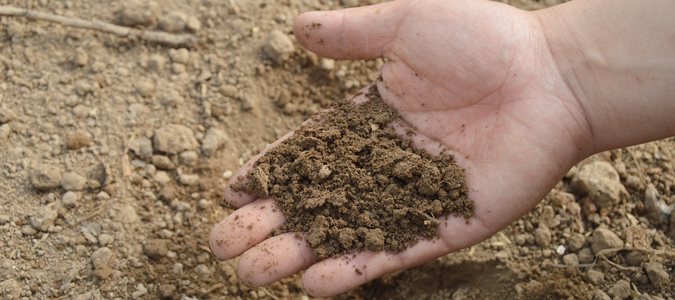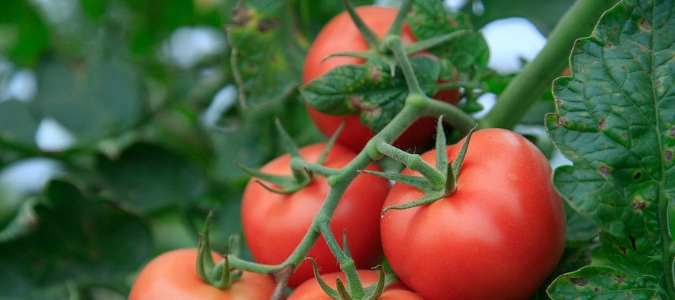Today, knowledge about the at-home composting process is spreading, thanks to the internet and how-to articles and videos. Composting has never been more accessible for homeowners all across the United States.
Composting can help you reduce your household waste while fertilizing the soil in your lawn. As long as you have a yard, you can compost, regardless of whether you live out in the country or in a suburb.
Keep reading to discover what compost is used for, the differences between compost and loam and the best compost for a vegetable garden.
Composting Basics for Your Yard
At-home compost is a valuable resource for your lawn maintenance. Compost is used to nourish your lawn or garden with crucial nutrients.
Composting is often more popular in rural areas where people grow their own food. Farmers have always understood the importance of using compost. But you don’t have to have a large garden to benefit from composting.
What is Compost Made of?
Many homeowners wonder, what is compost? Compost is made of decomposed natural materials which become soil. Decomposition can happen without human involvement, but humans can speed up the process.
Over time, natural materials rot and transform into nutrient-rich soil. Worms, insects, fungi and bacteria break down organic matter, like plants and leaves.
The type of compost that homeowners use for their gardens and yards is made of household food scraps. Unused parts of fruits and vegetables make great compost. Examples of fruit and vegetable scraps include banana peels, apple cores, potato skins and strawberry stems. You can compost coffee grounds or paper tea bags, if staples are removed from the bag. Plants from your house or yard can contribute to your compost, as long as they are not diseased or covered in pesticides.
Homeowners should not compost animal by-products like meat leftovers or eggs in their backyards. Egg shells are okay because they are less likely to smell badly. Pet fur or human hair can be composted at home, but animal feces should not be.
The Benefits of Composting
There is a lot of talk about compost in the media lately. Compost is becoming trendier because it is a great way to care for the environment. Instead of throwing away your food scraps, you can compost them.
The composting process returns these organic materials back to the earth. By keeping your scraps out of plastic bags bound for the landfill, you are preventing methane gas production. Methane is warming our planet, so at-home composting can play a role in fighting climate change.
Compost can nourish your grass and boost healthy microbes in your soil. Using compost in your lawn also helps your yard hold water better and prevent erosion.
Spreading compost on your lawn prevents weeds naturally—without the use of herbicides. It adds nitrogen, potassium and phosphorus to your lawn. This is a great fertilization option for homeowners who are concerned with the chemicals in traditional fertilizers.
How to Compost at Home
There are a few different methods of composting that you can do at home. A compost bin, either left open and off-limits to animals or closed, is the easiest method. Another option is to create a compost pile in a shady part of your yard. Homeowners will need to wet the pile and mix it regularly.
To start a compost pile in your backyard, combine “green” and “brown” materials. Fruit and vegetable leftovers, coffee grounds and plants count as green materials, which add nitrogen to your compost pile. Brown material like paper, leaves and sticks enhance your compost’s carbon content.
Most people probably think of compost as green food scraps collected in “green bins” that are sent to commercial composting facilities. However, there should be two to four times more brown materials in your compost pile to maintain the right balance between nitrogen and carbon.
If you do not want decaying materials to be visible in your yard, you can bury your compost. This method is called trench composting, which allows for your compost to naturally mix with your yard’s soil.
How to Use Your Compost
Compost can be used in a number of ways in your backyard. Try using your compost as mulch around your trees. Add compost to flower beds or in flower pots.
Avoid putting too much compost on your grass as a little compost goes a long way. In the early spring, distribute the compost across your lawn in an even layer up to a half-inch tall. This strategy keeps your grass greener during warmer months. Just don’t add compost to late into the spring, especially if you live in a warmer region of the country. This is because compost can burn the lawn if it is applied when it is too hot outside.
Compost Versus Loam
Soils come in different textures and are made of various materials. The most notable soil groups are sand, silt and clay. Clay is full of nutrients, and sand drains easily.
Loam is the number one soil for gardening. Loamy soil is a mixture of large sand particles, medium silt particles and tiny clay particles. High-quality loam will have the same amounts of silt and sand (40 percent each) and half as much clay (20 percent).
How Compost and Loam Compare
Compost is loose and crumbly in texture whereas loam is more smooth and densely packed.
Like compost, loam locks in water and nutrients. Loam also allows excess water to drain at the proper time, which prevents your plants’ roots from rotting. Compost does not drain as well as loam.
When evaluating compost versus loam, the most significant difference is their chemical makeup. Made up of organic matter, compost looks like soil but isn’t. Whereas the materials that form the basis of compost were living things, the sand, silt and clay that comprise loam were never alive.
For this reason, compost can add much needed nutrients to your loamy soil. Using both loam and compost will allow your plants to thrive all summer long.
For your convenience, compost can be purchased from gardening stores if you do not have the time or energy to make your own. Loam is much more difficult to create, as the right balance between the components is tricky. Unfortunately, loam can be expensive, so getting a recommendation for which brand to use is wise.
Creating a Lawn Care Schedule
Compost and loam can be important tools in helping your plants grow properly. Regular maintenance is the best way to keep your lawn and garden healthy. However, most homeowners do not have that much extra time to devote to lawn care.
A lawn and fertilizer specialist can apply compost to your yard correctly. A professional can also plan and implement a lawn care schedule to fertilize your yard. Having a set schedule can keep your lawn looking good year-round.
The Best Type of Compost for Vegetable Gardens
Homeowners can improve the nutrient content of their soil in their gardens or planting beds by adding compost. Spread the compost out up to two inches in your garden. Use a shovel or gardening to combine the compost with your soil. Over time, the compost will aid in the development of your garden.
If you are growing flowers, an inch of compost should be mixed in with the top layer of soil in your flower bed. Compost can also be used for protecting the roots of your flowers during the winter.
Autumn is a good time to add a layer of compost to your vegetable garden. In the spring, use a tiller or hoe to mix the soil and remaining compost. When you start planting, add some compost in the hole you have dug for your plants. This strategy will surround your crops with the proper nutrients. If you have a recurring lawn service, they can help with these projects.
The Right Compost Type for Your Garden
Two types of compost differ in how they are produced. Cold or passive composting is best for homeowners who do not have much time to dedicate to the composting process. This option takes much longer to produce usable compost.
Active composting, also called hot composting, involves more work for the homeowners, but is a dramatically faster process. The perfect mixture of air, water, nitrogen and carbon will create rich compost in a few months.
Cold composting often does not destroy dangerous bacteria, fungi, or diseases in your compost. The longer process of hot composting gets rid of unwanted pests, pesticides and pathogens. Therefore, compost that has been created through hot composting is safer for your garden.
Your compost is mature and ready to use when the materials are no longer distinguishable. The color and texture of the compost will be dark and smooth. By the end, your pile will be much smaller than it once was when you started composting. The compost will smell earthy and should not smell sour.
Do not use immature compost on your garden or lawn. If you do, you may harm your plants or attract unwanted pests. If composting sounds like too much work, contact a lawn care specialist who can provide the compost for you and apply it to your yard. Lawn care professionals can ensure you have a healthy yard.
ABC Can Create the Best Lawn Care Schedule for Your Yard
There are so many things to consider when creating a lawn care schedule. Instead of playing a guessing game, contact ABC Home & Commercial Services. Our professionals will keep your lawn healthy and green with compost made here in Austin—Dillodirt.



